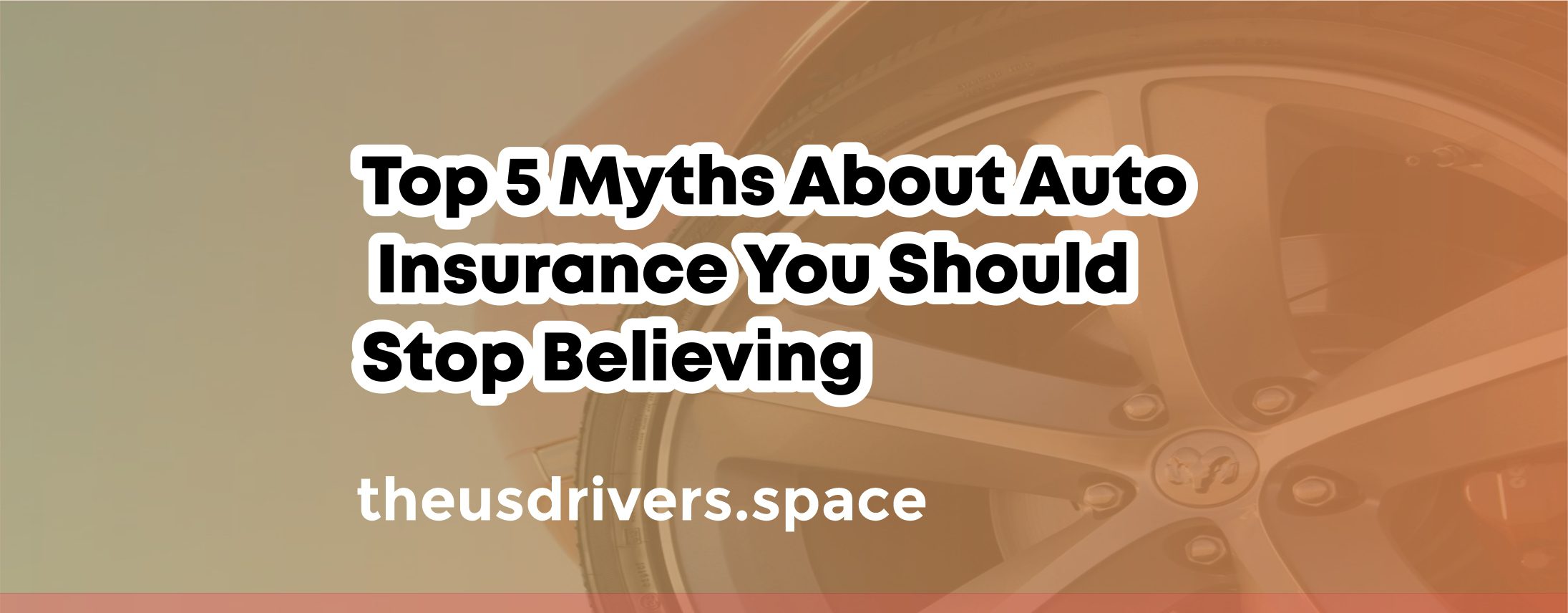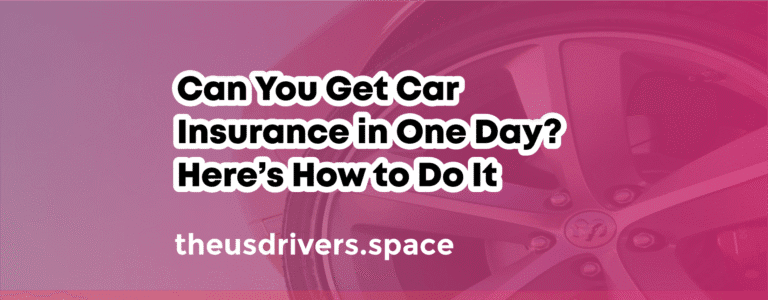Top 5 Myths About Auto Insurance You Should Stop Believing
When it comes to auto insurance, there’s no shortage of advice floating around. Friends, family, and even social media can be full of well-meaning but completely wrong information.
Believing these myths can cost you money, cause unnecessary stress, or even leave you underinsured.
In this blog post, we’ll break down the Top 5 Auto Insurance Myths and give you the real facts so you can make smarter decisions and maybe even save a few bucks in the process.
🚗 Best Auto Insurance Rates
Speak with a licensed agent today for a fast, affordable quote. Save big on your auto insurance now!
- Compare Top Insurance Providers
- Low Monthly Payments
- No Obligation to Buy
Toll-Free. Open Mon–Sat. Speak to a U.S. Agent
Myth #1: “Red Cars Cost More to Insure”
The Truth: Color has absolutely nothing to do with how much your car insurance costs. Insurance companies don’t even ask for the color of your vehicle when giving a quote.
What really affects your premium is your car’s make, model, engine size, year, your driving history, where you live, and how often you drive. So go ahead and drive that red Mustang — as long as you have a good driving record, your premium won’t be higher just because of the paint job.
Myth #2: “Older Drivers Always Pay More”
The Truth: While very young drivers (under 25) and very old drivers (typically 75+) can face higher rates, many drivers in their 40s, 50s, and early 60s enjoy the lowest premiums — especially if they have clean records.
In fact, many insurers offer senior discounts, and mature drivers are considered statistically safer than younger ones. If you’re in this age range, it pays to shop around and ask about age-related savings.
Myth #3: “Your Credit Score Doesn’t Matter”
The Truth: In most states, your credit score plays a big role in your auto insurance premium. Insurers have found that people with better credit tend to file fewer claims.
Improving your credit score can be one of the fastest ways to lower your rate. Check your credit, pay off debt where possible, and ask your insurer if your score is hurting your premium.
Myth #4: “Minimum Coverage Is Enough”
The Truth: State minimums often don’t cover much. If you get into an accident and the damage goes beyond your limit (which is very common), you’re on the hook for the difference — not your insurer.
Experts recommend choosing liability limits of at least 100/300/100, and always consider adding collision and comprehensive coverage, especially if your car is worth more than $3,000.
Myth #5: “Full Coverage Covers Everything”
The Truth: Despite the name, “full coverage” doesn’t mean you’re covered for every situation. It typically refers to having liability, collision, and comprehensive insurance. But it may not include things like rental reimbursement, roadside assistance, or uninsured motorist coverage — unless you specifically add them.
Always read your policy carefully or speak to an agent to understand what’s actually included.
Final Thoughts
Don’t let these common myths cost you money or leave you underinsured. Understanding how auto insurance really works puts you in a better position to save and stay protected.
Want to speak to someone who can walk you through your options and help you avoid costly mistakes? Call (855) 526-7216 now and talk to a licensed insurance professional.
You might be surprised how much you’ve been overpaying — and how easy it is to get the right coverage for less.
Related:
- Auto insurance myths
- What affects car insurance rates
- Car insurance facts vs fiction
- Common car insurance misconceptions
- How to lower auto insurance premiums
- Full coverage car insurance explained
- Best car insurance for older drivers
- Car insurance credit score impact


